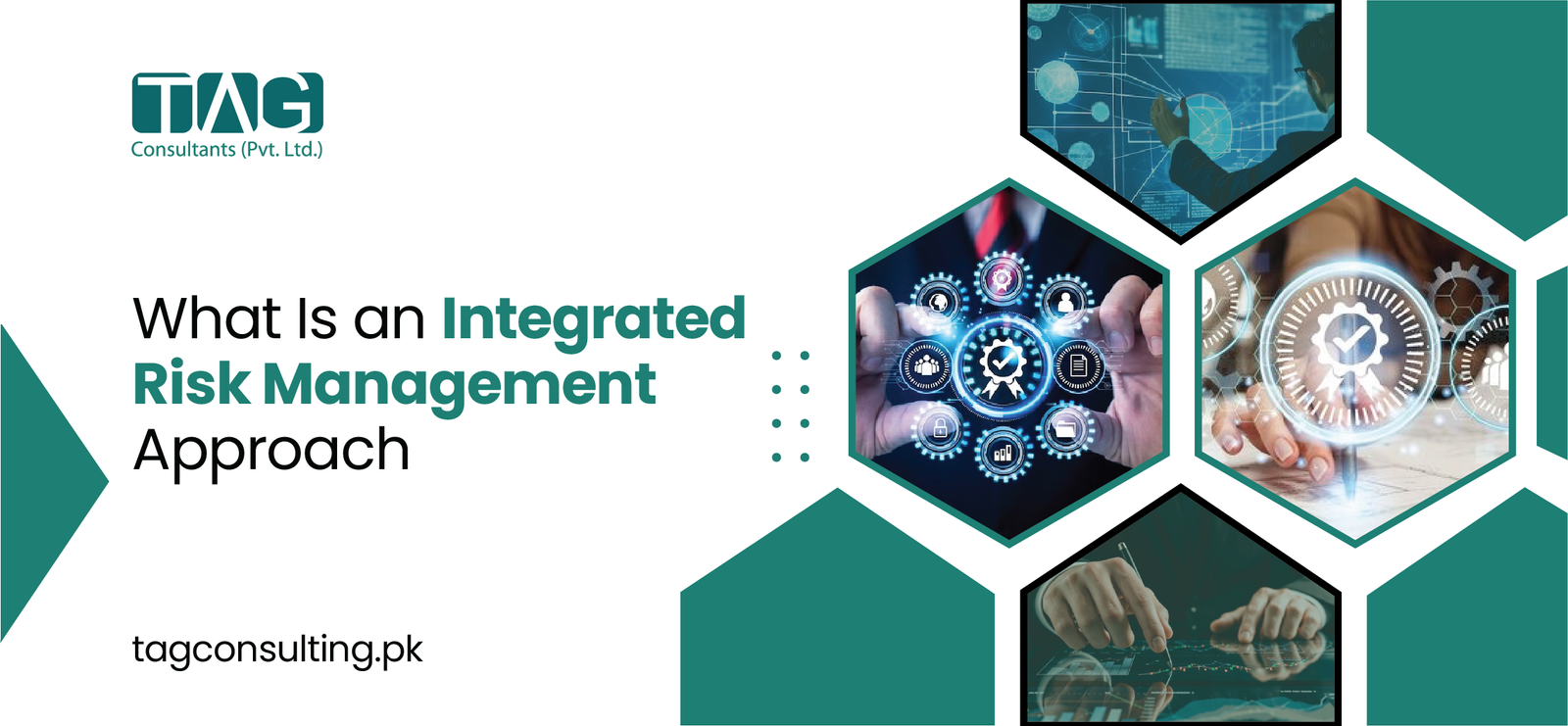Blog

The Importance of Cybersecurity in Business Risk Management
When we talk about cybersecurity in business risk management, we truly mean protecting everything that keeps your company running, that is, your data, your systems, your people, as well as your reputation.
Cybersecurity is no longer just an issue for IT departments. It is an essential component of how companies find, assess, and manage risks that could interrupt production or create financial or reputational damage. In times when cyberattacks are becoming more frequent and complicated, businesses can no longer afford to view digital threats as isolated episodes.
Business risk management is like a shield, and cybersecurity is one of the main parts that holds it all together. Cybersecurity in business risk management is an important part of keeping operations running smoothly and parties confident. It keeps customer data safe, makes sure business keeps running during an attack, and makes sure companies follow laws like GDPR and Pakistan’s PECA (Prevention of Electronic Crimes Act).
Why Cybersecurity Risk Management Is a Challenge
This is where things get tricky. It’s not as easy as updating passwords and running antivirus software to keep your system safe. The threats are always changing, so you need more than just tools to stay ahead of them. You need a plan.
Let’s look at a few reasons why companies struggle with cybersecurity risk management.
- Advanced Threats: There is always one step ahead of cybercriminals. It is very easy for new types of attacks, like deep fake frauds or zero-day flaws, to get around old defenses.
- Lack of Awareness: Still, a lot of workers suffer from phishing emails or use insecure passwords. And one of the most major drawbacks is human mistake.
- Resource Constraints: Unfortunately, not many companies, especially those in the SMB sector, can afford to hire full-fledged security teams or purchase enterprise-grade software.
- Regulatory Pressures: It becomes even more complicated when rules, such as worldwide standards and local data privacy legislation, keep changing.
- Interconnected Systems: Global digital ecosystems now include businesses. If even one of your vendors or partners has a security hole, it might compromise your whole organization.
In short, it’s not enough to just protect the gates; one additionally requires the safety of the entire kingdom from invisible and changing dangers.
Importance of Cybersecurity in Business Risk Management
Cybersecurity should be a top priority in your risk management approach, but why? To start, the cybersecurity for business risk management is about more than just preventing tragedies; it’s about creating the way for trust, stability, and progress.
Here’s are some reasons that why it i important:
- Data Protection: One of your most precious things is your data, which includes everything from client information to financial records. Protecting it from prying eyes is one of cybersecurity’s primary goals.
- Regulatory Compliance: It is possible to lose business licenses, pay fines, or both for failing to comply with cybersecurity standards. Keeping compliance and being audit-ready are features of successful risk management.
- Business Continuity: You might lose access to your systems, have data corrupted, or activities blocked as a result of a cyberattack. Reducing downtime and maximizing recovery time are two goals of a good cybersecurity plan.
- Reputation & Trust: A valuable resource in society is trust. Your reputation could be ruined by even one breach. Active risk management is valued by clients and stakeholders because it builds credibility.
- Cost Savings: Legal bills, ransom demands, and lost revenue are just some of the costs that might result from a data breach; investing in security is actually less expensive.
Basically, if you want to stay on top of the competition, controlling cyber threats is a must.
What Kinds of Risks Can Be Managed?
When we speak about managing cybersecurity in business risk management, what we truly mean is to maintain a variety of digital risks under control. A few examples of the most typical risks that companies face and how to mitigate them are following:
- Data Breaches: When private information is leaked or stolen, it means trouble for any company. A breach can lead to major consequences, irrespective of whether it involves customer data or intellectual property.
- Insider Threats: There are cases when internal threats may be the most significant. Disappointed or careless workers could accidentally leak sensitive information or open security holes.
- Ransomware Attacks: Your files will be encrypted by hackers who will then demand cash to decrypt them. Whole companies can become frozen by these kinds of attacks.
- Phishing and Social Engineering: Fake emails or messages try to get workers to share their passwords or click on links that are dangerous. Tech-savvy teams can be fooled by tricks that are well put together.
- System Downtime: Any downtime, whether it’s because of malware or bad technology, can cause businesses to lose money and time.
- Regulatory Non-Compliance: Not following data protection or cybersecurity laws can lead to big fines and damage to your image.
Companies can set up controls and strategies to successfully reduce these risks if they are aware of them early on.
What Should Be Included in a Risk Register for Cybersecurity?
Think of a cybersecurity risk register as your central command post. You can use it to monitor every possible threat, rank them according to severity, and design your response. The following features are necessary for a strong cybersecurity in business risk management:
- Identified Cyber Risks: Write down every possible danger that your company could experience, that is, phishing, ransomware, weaknesses in third parties, and so on.
- Risk Severity and Likelihood: Consider the possible effect and outcome of each risk and give a rating accordingly.
- Potential Impact: How would this affect the systems or data? Will activities be stopped? Would you risk losing your customers?
- Controls in Place: Record all of the current security procedures in place, including backups, firewalls, trainings, and many others.
- Risk Owner: Give out responsibilities. Every risk should be watched over and dealt with by someone in the company.
- Mitigation Strategies: List things that can be done to lower or get rid of the risk, like encrypting data or limited access.
- Status and Review Frequency: Find out if the risk is present, managed, or requires more action. To make sure it remains updated, plan for regular reviews.
It’s not enough to just make a cybersecurity risk register; it’s a live document that helps with ongoing risk management.
Top 3 Cybersecurity Risk Management Frameworks
It’s like traveling without a compass when you try to figure out how to handle cybersecurity risks. However, companies can use tried and tested standards to help them organize their work. These are three of the best:
1. NIST Cybersecurity Framework
The National Institute of Standards and Technology in the United States designed this structure, which is based on the following five principles: Identify, Protect, Detect, Respond, and Recover. It’s perfect for companies looking for a cyber risk strategy that can adjust to their needs.
2. ISO/IEC 27001
This is a standard for managing information protection around the world. It gives you a complete way to handle information risks, with a strong focus on always getting better. Great for companies that want to be certified and follow the rules around the world.
3. CIS Controls
These are a list of steps that businesses take to protect themselves from common threats. They were made by the Center for Internet Security. It’s a helpful structure that is action-oriented and great for companies of all kinds.
To better manage cybersecurity risks, these models provide structure, best practices, and criteria for success.
Best Cybersecurity Risk Solutions
Managing cybersecurity risks is difficult, especially with new threats and changing laws. Expert help is needed. Consulting with cybersecurity tech and strategy experts can simplify things. Companies like TAG Consulting (Private) Limited offer risk management solutions which are suitable for your company, helping you stay safe, follow the rules, and grow.
Final Thoughts
Cybersecurity is more than just a technical necessity; it is an important requirement. As digital risks increase, companies need to develop a proactive, systematic plan to protect their assets, reputation, and future.
Although it might look difficult, having a good plan for managing hacking risks doesn’t have to be. When given the right advice and tools, companies can have smart, flexible security plans that really work.
Many companies now work closely with risk advisory professionals who are familiar with both the operational and technical sides of cybersecurity. If you want to increase your company’s defenses, consider how external help might provide clarity and confidence to your risk plan.





